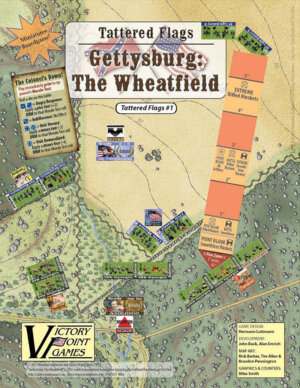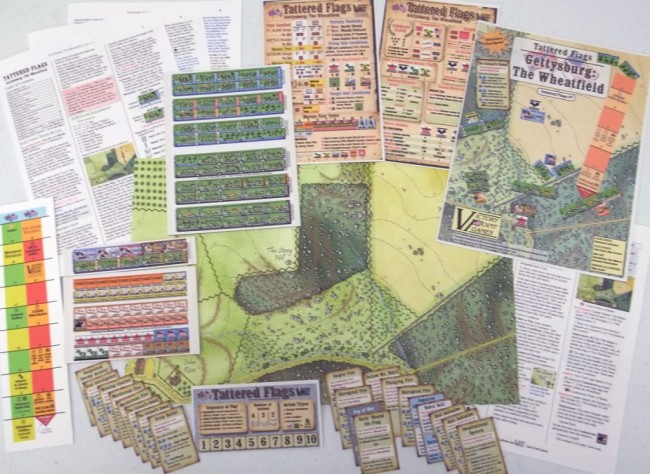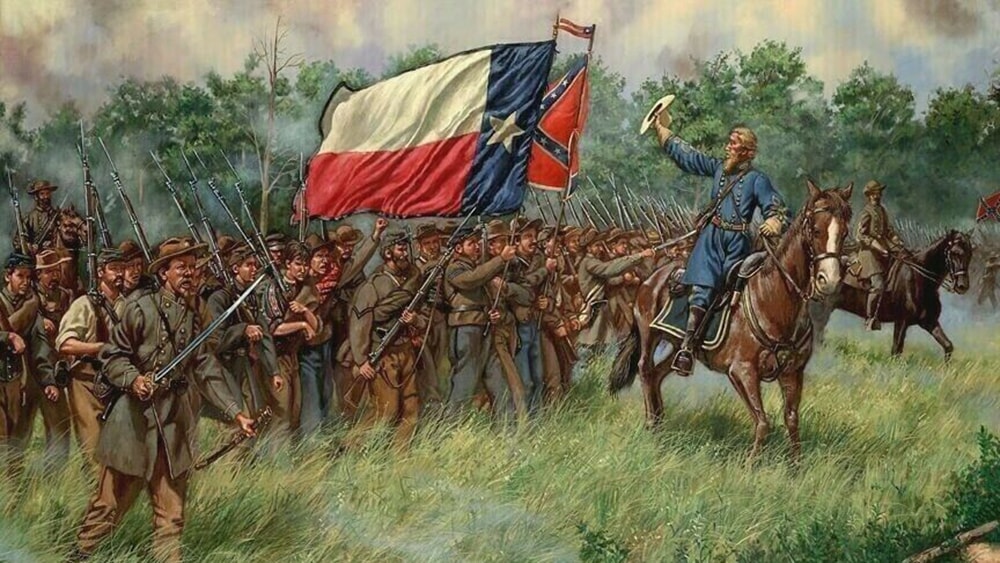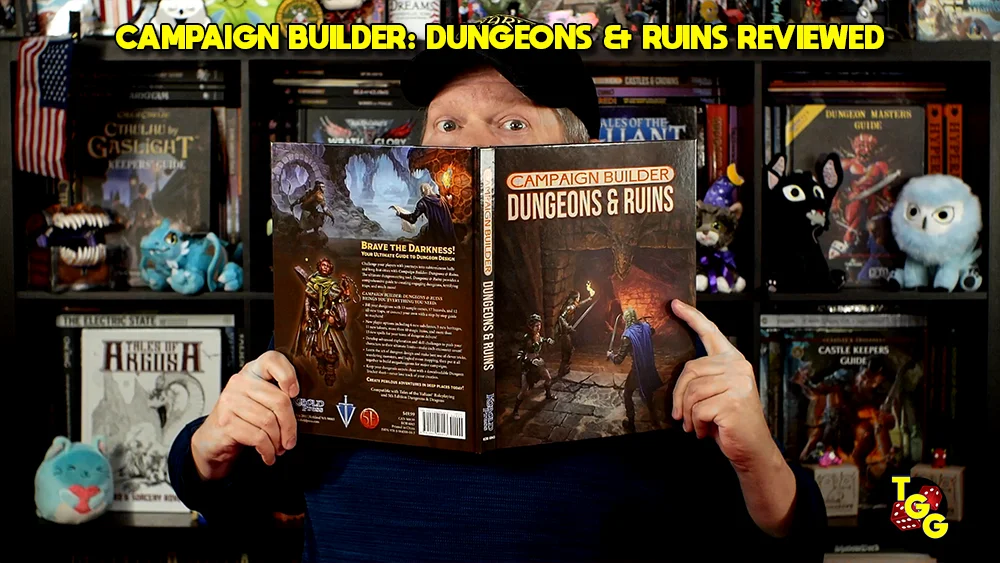
Publisher: Victory Point Games
Designer: Hermann Luttmann
Artists: Rick Barber and Brandon Pennington
Year: 2011
Players: Two players
Ages: 14+
Playing Time: Two to three hours
Category: Historical ACW boardgame
MSRP: $40.95
I’ve always been drawn to miniatures of all kinds (yes, I can even appreciate well designed dollhouse items) and was introduced to the hobby in the early eighties. Some of the first minis I painted were the old Grenadier AD&D series that were available. Another of my interests has always been history as well, especially the American Civil War, so as I got older I was drawn to historical miniatures as one of my many hobbies. There were plenty of afternoons where I battled away on representations of the fields of Manassas, Chancellorsville, and Wilson’s Creek with my hand painted 15mm figures. My opponent was almost always my pal Ed Rupprecht while I helmed the Union through every fight.
Plenty of rules systems hit the table but, for the most part, the old Fire and Fury set gave us just enough period flavor (and the ability to refight large scale battles) so it became our rule set of choice. I always enjoyed the meat and potatoes included in something like John Hill’s Johnny Reb series but we weren’t fans of the scale – over 200,000 men met at Gettysburg so why would I want to game simply what happened in Devil’s Den?
I mention these things simply because I’m honest enough to state I’m not necessarily the best suited reviewer when it comes to games that you might want to tackle with your five year old daughter but I certainly have hundreds of hours of gameplay when it comes to titles revolving around the War Between the States…

It’s important to note that Gettysburg: The Wheatfield is a look at miniatures rules as applied to a board game: The map has no hexes, the units are not simply square counters, and the focus is not stacking counters to create an unstoppable force. Wargamers who have not had an opportunity to play historical miniatures might find themselves scratching their heads when they’re first taking a look at G:TW.
It goes without saying that this is a Victory Point Game release and the components are at or above the usual expectations. The map has a nice feel to it and the realistic sense eminds one of an overview of a miniatures table nicely laid out. Honestly, I really dug the map and it’s very eye catching. The units themselves have the look of a stand of figures as viewed from a top down perspective. I honestly believe that VPG saw the potential of this design and did everything they could to bring the visual sense of a miniatures game to Gettysburg: The Wheatfield.
That may be all well and good but the question remains, how does the game play and will you want to buy it? For those who enjoy a good tactical workout the game plays very well and is a must buy. Yet for those looking for immediate payback each turn or wanting a mile a minute battle royale I’d have to say they take a pass on G:TW.
By nature historical miniatures games are slow going; I remember being introduced to the Empire Napoleonics system when I was around fifteen years old and wanted to pry my eyes out with a dull cavalryman’s sabre… Even to this day when I glance over that set of rules I begin to doze off. Regardless of the fantasy or SF miniature 
You won’t find over the top moments in Gettysburg: The Wheatfield as the design is of a higher focus. The problems of unit cohesion (one that faced any 19th century officer), terrain, morale, and so forth come into play. This isn’t a game of fast attack and defense but a commendable simulation of the slow, and sometimes plodding, development of a Civil War battle and the lack of control command in reality had. Keep in mind that this is all packed into twelve pages of rules. The number of pages to the rules is also an example of how VPG must feel about this series because it’s very rare to see that high a page count for one of their games.
Also included in the Gettysburg: The Wheatfield are Battle Cards that help create a deeper fog of war while providing bonuses to one side or the other if played at the right moment. These cards introduce a degree of randomness (VPG loves their chaos!) that would historically play a role on the battlefield.
Combat feels right and mechanically reflects the period. Unit formation, facing, and movement strike the right note as well. I will mention that the play time might seem excessive for some but, as someone who has seen Civil War miniature battles take an entire weekend without any true conclusion, I think the game actually breezes along pretty well.
Gettysburg: The Wheatfield is a solid entry into the line of historical wargames from VPG and is a great way for people interested in playing miniatures to get their feet wet without the cost and time involved with buying and painting figures. With minimal modifications I can easily see G:TW taking the place of some folks established miniatures rules as well.
I really enjoyed Hermann Luttmann’s latest design and look forward to the next installment! G:TW really hits the spot for someone like me who really misses those pitched battles on the table top from twenty years ago. Gamers who aren’t familiar with the mechanics of historical miniature rules might take a little bit of time to grasp some of the concepts within but, with minimal effort, the enjoyment of Gettysburg: The Wheatfield is worth it.
Or in other words, there’s a reason that the first release in the new Tattered Flags series is the fastest selling title ever produced by Victory Point Games!

[rwp-review id=”0″]
- Tales of Argosa: Sky Tower of Belk Xos Reviewed - Apr 14, 2025
- Symbaroum: Agrella – City of Eternal Euphoria Reviewed - Apr 13, 2025
- SOLO BORG is Up for Crowdfunding on Kickstarter - Apr 11, 2025


















It’s a little dishonest to say that the list price is $40.95, as the price is, and has always been, $34.95. They have a little $40.95 price with a red slash through it on their website. This is a shoddy tactic by VPG to attempt to fool you into thinking you’ve gotten a bargain. Even $34.95 is not really a bargain for a DTP game, even if it’s a good game, like all the others I’ve played.
Thanks again, Jeff, for a wonderful review. Once again, you really grasp the essence of the design and what is trying to be accomplished. I do appreciate that aspect of all your reviews – you “get” it each time.
A quick note to J Nathan – yes, the price is $34.95. Not to start up the whole “are VPG’s prices too high” discussion again, but I just had to deal with this matter on BGG discussing the price of Dawn of the Zeds as well. Price does not only equal component weight – it is also the value of the design itself. I have plenty of “pretty” games that sit on the shelf but nobody gets to see those components because no one wants to play the game. For the most part, VPG games are about repetetive, enjoyable play and that’s where you get your money’s worth. Alan Emrich tries to make pretty damn sure that the designs he publishes meet that goal. The games may not be to your taste and that’s cool, but there is a genuine attempt to fulfill the “The Gameplay’s The Thing” motto.
Good gaming!
Hermann
You’re very welcome Hermann! Keep cranking out the fun designs and I’ll keep writing reviews! 🙂
Hopefully, the VPG gang has High and Tight coming my way in the mail because I’d like to get a much deeper look into the game, outside of the play session you kindly shared with me at CSWE.
I’d rather not get into a whole “VPG pricing” thing myself as Elliott and I have mentioned this a few times on the show but I will toss a comment out about value. As I’m sure is true with every gamer, I’ve picked up titles at special prices or gotten deals and then turned around and played the game once. If I, and/or the folks I game with, don’t like a particular game it’s highly unlikely that title will make it’s way off the shelf again. Even if I bought the game at a 50% discount I’ve just payed quite a lot for one or two plays. Where’s the value in that?
At least I can say Elliott and I enjoy a great majority of Victory Point Games (although there are some that didn’t float our boats and we shared our feelings in the reviews) so they get multiple plays. Paying a few bucks more to support a small company that produces games you’ll play again and again just makes sense in my book; paying $35 for a game I play 10-20 times is a better value than buying a game for $20 and playing it twice.
Just another quick note regarding J Nathan’s comment as well…
I think this has inspired me to write an article regarding real pricing and Manufacturer’s Suggested Retail Price. Personally, I don’t think the practice is especially dishonest or shoddy but it is a game within a game that’s for sure. VPG is just like any other retailer (in any industry) that simply plays by those unwritten MSRP rules.
My point was really about the dishonest “On Sale” pricing lie. VPG sets a price, and I pay it or don’t; if I don’t like the price, I can complain to VPG, and they either change it or they don’t. That’s honest business. Youa can’t hide a blatant lie behind “standard business practice” or “unwritten MSRP rules,” especially when you are an otherwise open and transparent company like VPG. It’s just a little disappointing. We buy VPG games (which cost a bit more than the components should command) because we like them and want to support the unique enterprise that is VPG, not because we’re so foolish we’ve been tricked by a shoddy practice!
I’m right with you. And it’s not just a little disappointing, it’s actually borderline infuriating. If you go to a game developer’s website they will hit you up for the full price while within a couple of mouse clicks you can be at an online retailer who offers you twenty percent off that very same item. The company who released the game was more than happy to accept a purchase (granted a bulk purchase) from a retailer or distributor for a discounted amount yet you go to the source and are forced to pay more.
The ultimate of hypocrisy is the individual who actually owns a game company as well as an online retailer with a brick and mortar store yet charges three different prices at each while presenting themselves as three different entities.
I really like VPG and the people involved with the company. Yes, Elliott and I have issues with the pricing of their games as well as the residuals designers get from the company. But, in the end, we think VPG does a whole lot more right than they do wrong. This isn’t to imply that Victory Point gets a free ride around here. As I’m sure Alan Emrich will attest, he and I have disagreed on many things in our correspondence. The point is there is a mutual respect where I can understand his viewpoint even if I’m not in agreement; I also get that in return.
At the end of the day it isn’t the “dishonest pricing lie” as you put it that sets prices. The price is set by what value someone assigns to a product: I’d probably pay three or four bucks for a hard to find game from Twilight Creations on the secondary market simply because I don’t value their products. On the other hand, I’d pay $100 or more for an out of print GMT title that I really wanted if I knew a reprint wasn’t going to make an appearance in the next year or two. A great case in point is their Down in Flames series that I picked up for a couple hundred bucks all told…
VPG is like any other company out there: they want to be successful, stay in business, and turn a profit. All that matters in the end is if you like the company and feel you get good value when you buy their games. If they post an MSRP on their website with a slash through it when all along they offer the game at the advertised sale price forever, the point is still moot. It’s not a lie, it’s not dishonest, it’s not a shoddy practice, it’s the way that retail business has been done for the last 50 years.
I have to agree with Jeff here (for what its worth), I personally (note: one man’s opinion) think the VPG prices are a little on the high side when it comes to components. The actual artwork on the most part is excellent, its the quality of the cards that really need an upgrade! Its very difficult to shuffle (without sleeves) and shuffling on the rough surface will wear the sub-par components out quicker!
What I do agree with is value can be and should be measured about good the game is and how well the games are designed and understand and it in this area, VPG is sublime. In the past year, I think I have played more VPG games than any other publisher… yes, that is partly because many of the games are short and make good filler games… but that doesn’t take away the fact that the games get played a lot.
And in the end, I think that should be the bottom-line for any prospective game buyer.
As for crossing the so call MSRP price out… I don’t think its necessary and it does insult a wargamer’s intelligence. I could also complain about some of the “expansions” that should’ve been included in the original game, but I won’t.
They are an avante guard print and play company that spends a lot of time researching and developing games. Their “model” allows games like No Retreat, and fading glory to be well established and reprinted by other companies. You are paying for the game not the components, and I dont think they have the ability to mass produce the amount of games they publish. Each game is printed as the game is ordered and put in a bag. That is not a cheap way to do things, but if they sent out to a printer and ordered a 1000 copies, there would be no way they could fund that sort of inventory sitting around and waiting to be sold.
They are top notch in my book. I will agree that the component quality leaves quite a bit to be desired. I think their partnership with GMT will do great things for the gaming world, as games that would typically never be printed are given the opportunity to be printed on demand.
Regarding expansions, don’t forget that VPG games comes in the plastic bags and only so many components can fit into a bag without risking damage. As far as Wheatfield is concerned, we intentionally kept the game small at inception to give people a taste of the new game system without overwhelming them. I don’t think many players would take a chance on a totally new system if we threw in 500 counters, six maps and sixteen pages of rules and charged $75. In the current way the game is marketed, the system is built in a modular fashion so you can pick the size and complexity at which you wish to enjoy the game.
Well, when you buy a game, you’re not just buying a box (or, in our case, bag) of components. You’re paying for the game’s design and development, too. That’s worth something. Shoot, when you by a computer game on a DVD, do you say, “I’m not paying $50 for a seventeen cent piece of plastic!” Probably not… you know you’re paying for all the labor in design, development, graphics, etc. It’s no different with VPG.
The suggested retail price was what our (all too few) retail stores wanted. They informed us that the games need a retail price on them and that they have to “mark them up” to pay their brick-and-mortar store rent. We obliged. So, our prices are merely “marketing,” not some vast conspiracy. If you want to see them raw, just click on the BLITZKART button on our web site. That will help you relax…
You’re not happy with what we pay our designers? What is THAT all about? Obviously, they must be on the happy side, or we wouldn’t have any. Look, we pay $0 in advances, $1 per game sold, and in exchange for that “pittance” (which does add up, by the way), they get to RETAIN THE RIGHTS to their design and we do all the development work. That’s not a bad deal, daddy-o.
Combine that with the fact that we’ll train up new designers and work with them on their first releases, and you should be a lot more sanguine about our pay and contracts.
Regarding component quality, it’s hard not to notice that common complaint. Well, if you read the latest VPG update, we’re pricing leases on new equipment RIGHT NOW that will address these issues. It will take time, but it is a direction that we are definitely planning and budgeting for in 2012.
This may surprise some, but we like nice games with good components, too! We’re bringing you the best we’re able and still provide the great little eclectic titles that we do on such a regular basis.
I’m sure there’s more stuff in the above thread I need to address, but I need to dash right now. My family beckons!
Alan Emrich
Alan, I didn’t say we were happy or unhappy with what VPG designers receive. I said we have an issue, yet didn’t state what their payout is. We would just think they would receive more than a dollar per copy sold as that seems to be a bit low from our discussions with various designers out there. At no point did I use the word “pittance” or any such ilk. The sentence was an aside to point out that as much as we love VPG, it’s certainly not a perfect company nor is any other company that we’re aware of in the industry.
You have to love Alan for taking time out to address the comment thread and to give me a slap to the head if he disagrees with something I write or say. 🙂
Seriously.
That’s one of the reasons we enjoy having VPG as a sponsor because it’s a company more concerned with bringing fun and unique titles to the public as opposed to kissing butts and bringing the same old tired crap to the gaming table.
Oh, and a side note – since the comment thread has moved into sort of a back and forth regarding VPG – I really do like Gettysburg: The Wheatfield! I just thought I’d toss that reminder out there in case people are getting a little sidetracked by this thread…
In other words, the line of discussion going on has nothing to do with this particular game (which is quite alright in my book as discussion is great!) so no matter what we’re chatting about here, get over to the VPG site and order a copy!
“We would just think they would receive more than a dollar per copy sold as that seems to be a bit low from our discussions with various designers out there.”
I guess those various designers forget to mention that they’ve also SOLD ALL THE RIGHTS to their games in exchange for more generous payment. That’s a pretty darn important detail!
And When you think about it. If a game is $20, then $1/game is 5%, which is about industry standard. And, again, they get to keep the rights to their design. That’s akin to a “sweetheart” deal, but those various designers probably failed to mention that.
Of course, on a $40 game, that’s a 2.5% royalty, which is hardly insulting. We have to do a lot more development work on those bigger games, for sure, TO WHICH THE DESIGNER’S GET TO KEEP THE RIGHTS to their designs.
Did these various designers you’ve talked with explain the math to you like this? Probably not…
And did I mention that, unlike every other game publisher deal I’m aware of, our designers get to KEEP THEIR RIGHTS to their designs?
Seriously, you don’t think that’s worth something? Ask Carl Paradis how big a payday get got when we licensed HIS DESIGN (which he has the rights to!!) to GMT?
Man, these “various designers” of which you speak clearly don’t “get it.” The numbers don’t lie; we share our risk with the designers, and they keep their rights. That’s frickin’ HUGE, man!
Alan Emrich
PS. And, yes, Gettysburg: The Wheatfield really is a rockin’ game. Now, how many Big Box boardgame publishers would even take a chance or spend their time developing a game like that from a new designer? Right… that’s why we need a VPG out there. 🙂 -AE